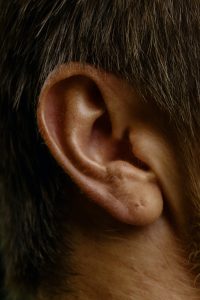
Sensory Processing Disorder—Living In A Chaotic Unpredictable World
Sensory processing disorder (SPD) occurs in about 90% of individuals with autism but it is also a stand-alone condition.

Information comes in through the 5 senses, sight, hearing, taste, touch or smell; this information needs processing. There are also 3 other sensory systems: the vestibular system (semi-circular canals giving information about balance and movement/acceleration through space), the proprioceptive system (within joints and muscles giving information about where our body is in relation to itself) and the interoceptive system (all internal well-being systems e.g. how our gut, heart and lungs are functioning).
Information from these systems is being processed all the time, individuals with SPD find themselves hypo(under) or hyper(over) sensitive to the input from the sensory systems.
Healthy integration of the sensory systems leads to the management of the following (this list is not exhaustive):
- Posture
- Balance
- Gravitational security
- Eating a balanced diet
- Tactile comfort
- Body perception
- Co-ordination
- Attention span
- Emotional stability
- Speech and language

If an individual with SPD is unable to accurately process the world around them, it can feel unpredictable, chaotic and unsafe.
Altered sensory functioning
There are a number of ways the functioning of the systems may be impaired. Each of the 8 sensory systems may be over-responsive or under-responsive:
Sight—preference or dislike of certain colours, patterns or bright lights may cause raised anxiety.
Hearing—an acute sense of hearing, finding certain or persistent sounds unbearable, possible leading to headaches. Under-sensitivity may lead to a need to make sound.
Smell—agitation caused by certain smells or lack of awareness of even very unpleasant odours.
Taste—finding standard foods unpleasant can lead to a very restrictive diet. However, being under-sensitive may mean not reacting to very strong tastes such as raw onion or raw garlic.
Touch—the lightest touch may cause irritation or deep pressure sensations may be craved.
Vestibular system—difficulties with starting or stopping movement/balance.
Proprioceptive system—an inability to know where the body is in space or a need to be on the move all the time i.e. stimming
Interoceptive—under or over sensitivity to internal system wellbeing, e.g. pain, hunger
Sensory discrimination disorder means an individual finds it difficult to distinguish the difference between different inputs, e.g. is this touch safe or dangerous? is this smell poisonous? Pica, the practice of eating inedible items is also considered part of sensory processing disorder.
Sensory-motor disorders occur because there are a number of sensory systems needed to move. Challenges in praxis occur if there’s a disruption anywhere from ideation, planning and sequencing through to carrying out the movement.
An individual may not simply by hyposensitive or hypersensitive but a combination e.g. hypersensitive to sights but hyposensitive to taste or touch.
Often we think about physical health and mental health, I've also written about spiritual health on my blog before—but some recent training has challenged me to consider sensory health as a bridge between them!
I’ve had years of physical health problems trying to explain what I’m experiencing to doctors can be futile. I had no idea until recently this could be related to autism. My interoceptive system processes the sensations of my body differently. Having a stabbing pain that signals to my brain “don’t eat” could mean “your hungry”. When one person feels pain, I may not—when another feels no pain, I may be in pain.
I used to describe this as a brain-body disconnect (having no better way of describing it) and considered myself a failure. My physical health negatively impacted my mental health but now I have more of an understanding that my sensory system is being hypo- or hyper-stimulated, I’m able to offer myself a little more compassion!
How can we help?

I do my bit to raise awareness of these issues but it’s hard when we’re all so different!
I was in a meeting the other day, the door was open near us as it was a hot day. It was providing a breeze, I could hear the birds, other sounds and the occasional scents was coming in front outside. If I’d been finding the sensory input of the door being open too much but shutting the door would have made the temperature too high, how do you balance the varied needs of multiple people?
Someone else in that environment may have felt too cold and their ability to concentrate could have been severely impaired. The fact that I was asked what I needed made a huge difference to how I felt about the situation.
Open plan, hot desk environments are the bane of autistic individual’s lives. There’s no way everyone’s needs can be accommodated. The lighting, temperature, noise levels will, no doubt, be off for 90% people—while a neurotypical can filter the uncomfortable stuff out, it takes huge amounts of energy for someone with SPD to do that (if they can). Energy that cannot be spared—see this blog on Spoon Theory. Being able to modify your own (small) environment is an important part of managing SPD. Many autistic individuals end up working for themselves!
It’s not just be about altering the environment, other changes could involve encouraging regular breaks to aid interception, and education so stimming could be normalised.
Changing our culture so we’re not all expected to behave in the same way and meet the same expectations is a step in the right direction.





Comments
I need to to thank you for this great read!! I absolutely loved every bit of it. I have got you bookmarked to check out new stuff you postÖ